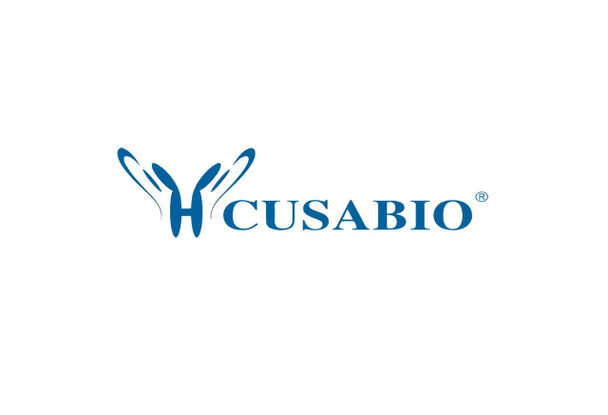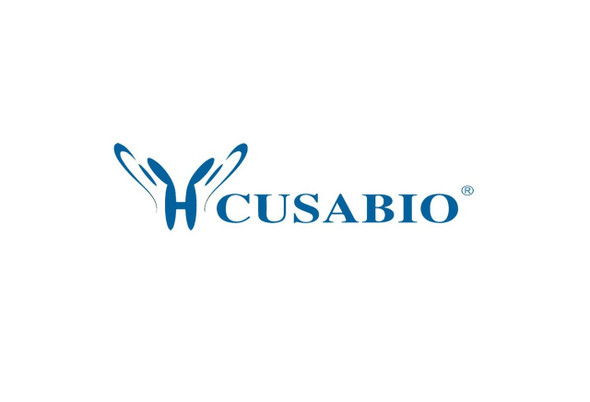Cusabio Human Recombinants
Recombinant Human Single-strand selective monofunctional uracil DNA glycosylase (SMUG1) | CSB-EP706636HU
- SKU:
- CSB-EP706636HU
- Availability:
- 3 - 7 Working Days
Description
Recombinant Human Single-strand selective monofunctional uracil DNA glycosylase (SMUG1) | CSB-EP706636HU | Cusabio
Alternative Name(s): FDG; HMUDG; MGC104370; Single strand selective monofunctional uracil DNA glycosylase 1; Single strand selective monofunctional uracil DNA glycosylase; Single-strand selective monofunctional uracil DNA glycosylase; SMUG 1; Smug1; SMUG1 protein; SMUG1_HUMAN; UNG 3; UNG3
Gene Names: SMUG1
Research Areas: Epigenetics and Nuclear Signaling
Organism: Homo sapiens (Human)
AA Sequence: MPQAFLLGSIHEPAGALMEPQPCPGSLAESFLEEELRLNAELSQLQFSEPVGIIYNPVEYAWEPHRNYVTRYCQGPKEVLFLGMNPGPFGMAQTGVPFGEVSMVRDWLGIVGPVLTPPQEHPKRPVLGLECPQSEGPRQSMGHEIKSELLMGGCSWIRGKIQCDRVQVRRPGFSSQL
Source: E.coli
Tag Info: N-terminal 6xHis-SUMO-tagged
Expression Region: 1-177aa
Sequence Info: Full Length of Isoform 2
MW: 35.6 kDa
Purity: Greater than 90% as determined by SDS-PAGE.
Relevance: Recognizes base lesions in the genome and initiates base excision DNA repair. Acts as a monofunctional DNA glycosylase specific for uracil (U) residues in DNA with a preference for single-stranded DNA substrates. The activity is greater toward mismatches (U/G) compared to matches (U/A). Excises uracil (U), 5-formyluracil (fU) and uracil derivatives bearing an oxidized group at C5 [5-hydroxyuracil (hoU) and 5-hydroxymethyluracil (hmU)] in ssDNA and dsDNA, but not analogous cytosine derivatives (5-hydroxycytosine and 5-formylcytosine), nor other oxidized bases. The activity is damage-specific and salt-dependent. The substrate preference is the following: ssDNA > dsDNA (G pair) = dsDNA (A pair) at low salt concentration, and dsDNA (G pair) > dsDNA (A pair) > ssDNA at high salt concentration.
Reference: Complete sequencing and characterization of 21,243 full-length human cDNAs.Ota T., Suzuki Y., Nishikawa T., Otsuki T., Sugiyama T., Irie R., Wakamatsu A., Hayashi K., Sato H., Nagai K., Kimura K., Makita H., Sekine M., Obayashi M., Nishi T., Shibahara T., Tanaka T., Ishii S. , Yamamoto J., Saito K., Kawai Y., Isono Y., Nakamura Y., Nagahari K., Murakami K., Yasuda T., Iwayanagi T., Wagatsuma M., Shiratori A., Sudo H., Hosoiri T., Kaku Y., Kodaira H., Kondo H., Sugawara M., Takahashi M., Kanda K., Yokoi T., Furuya T., Kikkawa E., Omura Y., Abe K., Kamihara K., Katsuta N., Sato K., Tanikawa M., Yamazaki M., Ninomiya K., Ishibashi T., Yamashita H., Murakawa K., Fujimori K., Tanai H., Kimata M., Watanabe M., Hiraoka S., Chiba Y., Ishida S., Ono Y., Takiguchi S., Watanabe S., Yosida M., Hotuta T., Kusano J., Kanehori K., Takahashi-Fujii A., Hara H., Tanase T.-O., Nomura Y., Togiya S., Komai F., Hara R., Takeuchi K., Arita M., Imose N., Musashino K., Yuuki H., Oshima A., Sasaki N., Aotsuka S., Yoshikawa Y., Matsunawa H., Ichihara T., Shiohata N., Sano S., Moriya S., Momiyama H., Satoh N., Takami S., Terashima Y., Suzuki O., Nakagawa S., Senoh A., Mizoguchi H., Goto Y., Shimizu F., Wakebe H., Hishigaki H., Watanabe T., Sugiyama A., Takemoto M., Kawakami B., Yamazaki M., Watanabe K., Kumagai A., Itakura S., Fukuzumi Y., Fujimori Y., Komiyama M., Tashiro H., Tanigami A., Fujiwara T., Ono T., Yamada K., Fujii Y., Ozaki K., Hirao M., Ohmori Y., Kawabata A., Hikiji T., Kobatake N., Inagaki H., Ikema Y., Okamoto S., Okitani R., Kawakami T., Noguchi S., Itoh T., Shigeta K., Senba T., Matsumura K., Nakajima Y., Mizuno T., Morinaga M., Sasaki M., Togashi T., Oyama M., Hata H., Watanabe M., Komatsu T., Mizushima-Sugano J., Satoh T., Shirai Y., Takahashi Y., Nakagawa K., Okumura K., Nagase T., Nomura N., Kikuchi H., Masuho Y., Yamashita R., Nakai K., Yada T., Nakamura Y., Ohara O., Isogai T., Sugano S.Nat. Genet. 36:40-45(2004)
Storage: The shelf life is related to many factors, storage state, buffer ingredients, storage temperature and the stability of the protein itself. Generally, the shelf life of liquid form is 6 months at -20?/-80?. The shelf life of lyophilized form is 12 months at -20?/-80?.
Notes: Repeated freezing and thawing is not recommended. Store working aliquots at 4? for up to one week.
Function: Recognizes base lesions in the genome and initiates base excision DNA repair. Acts as a monofunctional DNA glycosylase specific for uracil (U) residues in DNA with a preference for single-stranded DNA substrates. The activity is greater toward mismatches (U/G) compared to matches (U/A). Excises uracil (U), 5-formyluracil (fU) and uracil derivatives bearing an oxidized group at C5 [5-hydroxyuracil (hoU) and 5-hydroxymethyluracil (hmU)] in ssDNA and dsDNA, but not analogous cytosine derivatives (5-hydroxycytosine and 5-formylcytosine), nor other oxidized bases. The activity is damage-specific and salt-dependent. The substrate preference is the following
Involvement in disease:
Subcellular Location: Nucleus
Protein Families: Uracil-DNA glycosylase (UDG) superfamily, SMUG1 family
Tissue Specificity:
Paythway: DNArepairpathway
Form: Liquid or Lyophilized powder
Buffer: If the delivery form is liquid, the default storage buffer is Tris/PBS-based buffer, 5%-50% glycerol. If the delivery form is lyophilized powder, the buffer before lyophilization is Tris/PBS-based buffer, 6% Trehalose, pH 8.0.
Reconstitution: We recommend that this vial be briefly centrifuged prior to opening to bring the contents to the bottom. Please reconstitute protein in deionized sterile water to a concentration of 0.1-1.0 mg/mL.We recommend to add 5-50% of glycerol (final concentration) and aliquot for long-term storage at -20?/-80?. Our default final concentration of glycerol is 50%. Customers could use it as reference.
Uniprot ID: Q53HV7
HGNC Database Link: HGNC
UniGene Database Link: UniGene
KEGG Database Link: KEGG
STRING Database Link: STRING
OMIM Database Link: OMIM









